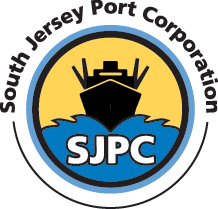Each Monday night, the Bermuda Islander sails from the Port of Salem for a Thursday docking at Bermuda’s Port of Hamilton with its weekly cargo of fresh produce, meats, and everyday consumer good – perhaps it seems mundane, but this service is vital to the islanders’ needs and the tourists that are Bermuda’s economy.
Since 1989, Bermuda International Shipping Ltd, a group mainly consisting of local importers and businesses in Bermuda, has shipped 35 percent of Bermuda’s consumer goods through the Port of Salem to its island paradise.
Most of the products arrive already consolidated in their containers from an established network of suppliers throughout the USA. Other suppliers take advantage of the excellent services provided by Mid-Atlantic Shipping and its managing owner Butch Irvine, who provide consolidation and storage services at their 9,000 square foot warehouse in Salem. Their 17 employees and reliable network of 25 truckers are locals who understand the need to go above and beyond to keep their customers happy and ensure that the Bermuda Islander is ready to leave port on Monday.
Loaded with 120 TEU’s containers, including 30 refrigerated, the shallow draft Bermuda Islander navigates weekly via the 16-foot-deep Salem River that flows into the Delaware River and Bay and the Atlantic Ocean on its’ three-day journey to Bermuda. It returns by Monday morning, off-loads the empty containers, reloads full containers, and sails back Monday night on schedule. Nearly two percent of the return containers are used to transport used recycling materials, including cooking oil, and the occasional belongings of a family migrating to a new home.
For decades, it has become the dependable and agile conveyor belt of supplies to Bermuda, through good weather and bad, moving 13,000 containers annually. The Bermuda Islander and Mid-Atlantic Shipping have been vital partners to the South Jersey Port Corporation and an economic generator in southern New Jersey. They have invested over $25 million in the facilities, infrastructure, and taxes over the years.
Hurricanes, legendry and fierce in the Caribbean in September and October, have had a minimal negative impact on the Salem to Hamilton supply chain. The Bermuda Islander is dedicated solely to the route. If necessary, it can ride out the storm in either port for the days it takes to blow over. Meanwhile, sensitive to the vulnerability during hurricane season, islander importers stockpile, well in advance, critical non-perishable supplies to tide them over through a series of storms.
The Port of Salem is part of an integrated network of ports in southern New Jersey that move over 4 million tons of cargo annually and are becoming the center of the supply, manufacturing, and assembly of the offshore wind industry on the East Coast. The Salem Marine Terminal offers direct access to road and rail service without the time-consuming and expensive delays associated with other larger East Coast ports.



